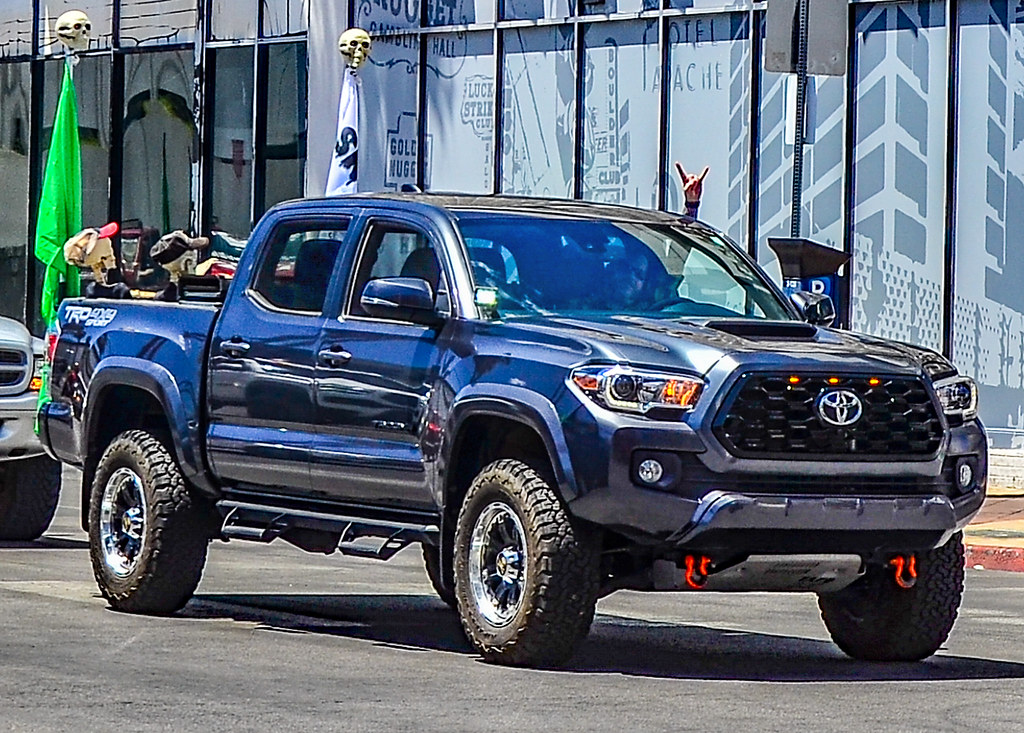Even though the automobile was an invention from the Old World, it was America that truly conceived and cultivated the very concept of automobile culture. While Europe initially viewed cars largely as sophisticated toys for a wealthy elite, the United States embarked on a transformative journey, reshaping these intricate machines into indispensable everyday items accessible to the common person. This shift wasn’t merely about accessibility; it was a revolution in industry, introducing groundbreaking construction methods, creating entirely new car classes, and ultimately cementing the automobile’s status as the quintessential symbol of modern times. This profound influence makes it unequivocally clear that the United States has been the single most significant nation in the evolution of the car industry.
Over the past century and beyond, this deeply influential nation has, quite naturally, given birth to a remarkable lineage of iconic models. These aren’t just vehicles; they are monuments to American ingenuity, machines that have consistently pushed boundaries and redefined possibilities. From the factory floor to the open road, American car manufacturers have consistently produced models that resonate globally, shaping design, engineering, and the very perception of personal transportation. Their creations have not only stood the test of time but have also dictated the currents of the global automotive industry, remaining profoundly relevant long after their production lines ceased.
Our journey through this curated collection will highlight a selection of these red-blooded American marvels. We will uncover both mass-produced stalwarts and rare gems, utilitarian workhorses and exclusive machines. The unifying thread amongst them all is their undeniable ‘American-ness’ – a spirit of innovation, freedom, and audacious ambition that continues to be celebrated today. These are the vehicles that didn’t just move people; they moved mountains, changing the landscape of industry, culture, and daily life forever.
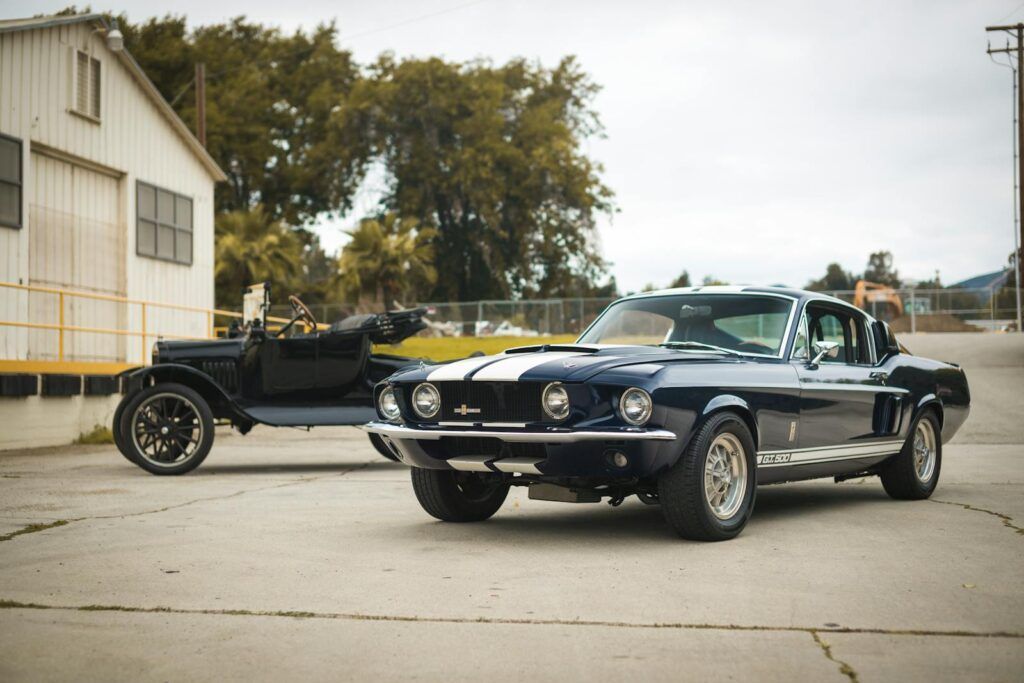
1. **Ford Model T**
It is virtually impossible to overstate the monumental importance of the Ford Model T in the annals of automotive history. This was not merely another car; it was the vehicle that singlehandedly brought forth the modern automotive world in 1908. Before its arrival, the idea of widespread personal transportation was a distant dream, but the Model T transformed this aspiration into a tangible reality for millions. It stands as the first truly mass-produced automobile, with an astonishing output of over 15 million units before its eventual discontinuation in 1927.
More than just a production marvel, the Model T fundamentally motorized the world, laying a robust foundation for the contemporary car industry. Its influence stretched far beyond American shores, with assembly plants established on other continents, effectively globalizing automotive manufacturing. Ford’s genius extended to the Model T’s versatile design; it was the first car produced in numerous versions, engineered with an inherent adaptability that made it easy to transform into a truck, an agricultural machine, or even a military vehicle as needed. This ingenious approach launched the Ford Motor Company into prominence, establishing it as the biggest car manufacturer in the world and inspiring countless other models to emulate its groundbreaking concept.
While the Model T wasn’t particularly revolutionary in terms of its design or advanced technology—it was, after all, conceived primarily as a utilitarian machine—its true genius lay elsewhere. The transformative combination of its unparalleled durability, remarkable affordability, and sheer usability truly changed the world. When the Model T was first introduced in 1908, the world was still largely reliant on horse-drawn carriages, a relic of an earlier age. By the time Ford ceased its production in 1927, the automobile age had not only begun but had successfully taken firm root, forever altering the fabric of society, commerce, and personal freedom.
Car Model Information: 2019 Acura RDX Technology Package
Caption: 1925 Ford Model T Touring Car
Manufacturer: Ford Motor Company
Production: October 1908 – May 1927
Assembly: collapsible list
Designer: Childe Harold Wills
Class: Economy car
BodyStyle: collapsible list
Layout: FMR layout
Engine: straight-4
Transmission: planetary gear
Wheelbase: 100.0 in
Abbr: on (1912 roadster)
Length: 134 in
Width: 1676 mm
Height: 1860 mm
Weight: convert
Predecessor: Ford Model N
Successor: Ford Model A (1927–1931)
Categories: 1900s cars, 1908 establishments in the United States, 1910s cars, 1920s cars, All articles needing additional references
Summary: The Ford Model T is an automobile that was produced by the Ford Motor Company from October 1, 1908, to May 26, 1927. It is generally regarded as the first mass-affordable automobile, which made car travel available to middle-class Americans. The relatively low price was partly the result of Ford’s efficient fabrication, including assembly line production instead of individual handcrafting. The savings from mass production allowed the price to decline from $780 in 1910 (equivalent to $26,322 in 2024) to $290 in 1924 ($5,321 in 2024 dollars). It was mainly designed by three engineers, Joseph A. Galamb (the main engineer), Eugene Farkas, and Childe Harold Wills. The Model T was colloquially known as the “Tin Lizzie”.
The Ford Model T was named the most influential car of the 20th century in the 1999 Car of the Century competition, ahead of the BMC Mini, Citroën DS, and Volkswagen Beetle. Ford’s Model T was successful not only because it provided inexpensive transportation on a massive scale, but also because the car signified innovation for the rising middle class and became a powerful symbol of the United States’ age of modernization. With over 15 million sold, it was the most sold car in history before being surpassed by the Volkswagen Beetle in 1972.
Get more information about: Ford Model T
Buying a high-performing used car >>>
Brand: Ford Model: Model T
Price: $28,599 Mileage: 12,696 mi.
Read more about: 10 Compact Motorcycles Ideal for City Commuting in 2025: Fuel-Saving & Agile
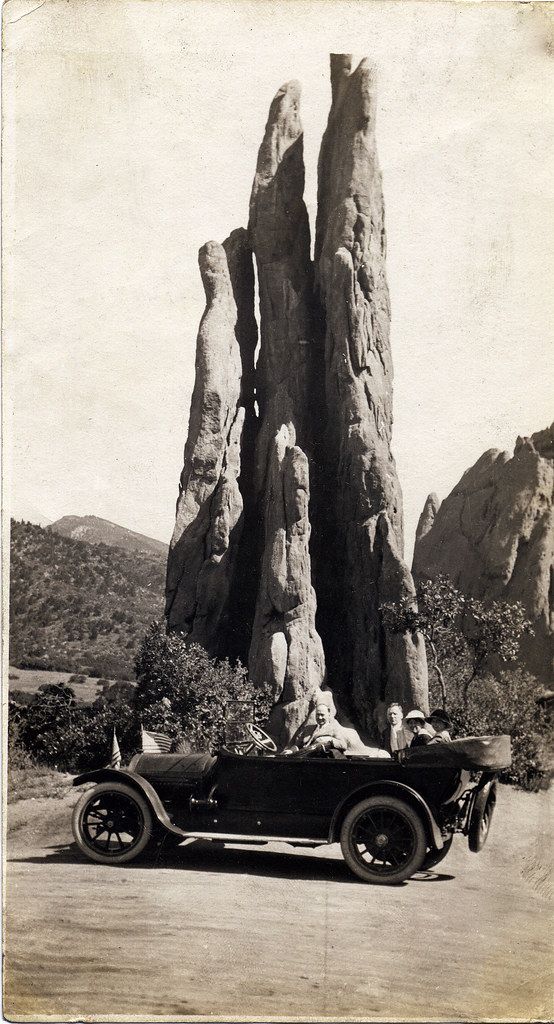
2. **Cadillac Type 51**
The mighty V8 engine has long stood as one of the most enduring technical symbols of both the American car industry and, specifically, the Cadillac brand. Yet, it remains a lesser-known fact that Cadillac was a pioneering force, among the very first manufacturers to integrate V8 units into mass production, doing so as early as 1915. In those formative years of the automotive era, the V8 configuration represented an advanced, high-tech solution, a marvel of engineering that promised power and sophistication previously unseen by the broader market. It was a bold statement of intent, signalling Cadillac’s ambition.
The inaugural Cadillac model to feature this innovative engine was the Type 51, a vehicle that, by the rigorous standards of the early 20th century, was truly considered a performance sedan. Beneath its hood resided a robust 314 CID V8 motor, capable of producing a respectable 70 HP. This output delivered a convincing level of performance for its era, setting a new benchmark for what a luxury vehicle could offer in terms of dynamic capability. It was a clear departure from the more sedate four and six-cylinder engines that dominated the market.
Buyers of the period immediately recognized and appreciated the sophisticated power and smoothness offered by the new Type 51, embracing it with enthusiasm. With the seminal introduction of this groundbreaking engine, performance was irrevocably cemented as a major, defining part of Cadillac’s burgeoning portfolio. Moreover, it laid a crucial cornerstone in the grand edifice of American automotive heritage, establishing a legacy of powerful, refined engines that would become synonymous with the nation’s most prestigious car manufacturers for decades to come.
Car Model Information: 2021 Jeep Grand Cherokee 80th Anniversary 4X4
Name: Cadillac Type 51
Caption: 1915 Cadillac Type 51 Phaeton
Manufacturer: Cadillac
ModelYears: 1915–1923
Assembly: Henry Ford Company,Detroit,Michigan
Class: Luxury vehicle
Layout: Front-engine, rear-wheel-drive layout
Engine: 314 cuin
Abbr: on (commercial use)
Transmission: manual transmission
Wheelbase: 122 in
Successor: Cadillac Type V-63
Categories: Articles with short description, CS1 errors: generic name, Cadillac vehicles, Cars discontinued in 1923, Cars introduced in 1916
Summary: The Cadillac V8, introduced as the Type 51 (but also the Types 53, 55, 57, 59, and 61) is a large luxury car that was introduced in September 1914 by Cadillac as a 1915 model. It was Cadillac’s first V8 automobile, replacing the four-cylinder Model 30, and used the all new GM A platform for the entire series shared with all GM division brands using a 122 in (3,099 mm) wheelbase.
The Types 53, 55, 57, 59, and 61 were introduced every year through 1923 with yearly improvements until an all new platform was substantially updated and introduced as the V-63 using the business philosophy called planned obsolescence. It was built at the Cass Street and Amsterdam Avenue factory in Detroit, with the coachwork provided by Fisher Body. The chassis could be purchased separately and sent to the clients choice of coachbuilder optionally.
Get more information about: Cadillac Type 51
Buying a high-performing used car >>>
Brand: Cadillac Model: Type 51
Price: $25,241 Mileage: 55,059 mi.
Read more about: 12 Must-See SUV Launches of 2025: Your Comprehensive MotorTrend Buyer’s Guide
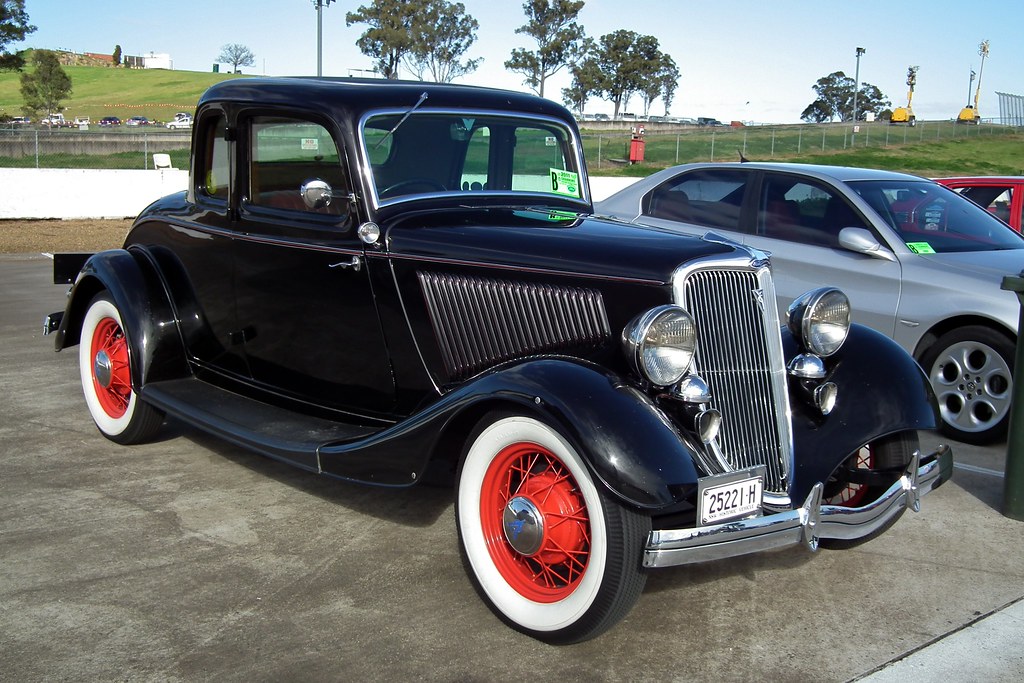
3. **Ford V8**
The 1932 Ford, initially conceived as a regular, mass-produced, and affordable everyday car, paradoxically altered the trajectory of car history forever. Its profound impact, which elevated it to one of the most influential American machines, stemmed from a rather straightforward yet ingenious engine option: the Flathead V8. Introduced within the unassuming ‘32 Ford, this engine quickly cemented its reputation as one of the best powerplants of the entire 20th century, a testament to Ford’s mastery of simple yet profoundly effective engineering. Initially, this 3.6-liter V8 delivered a modest 65 HP at the outset of its production, a figure that belied its future potential.
While other carmakers of the era also offered V8 engines in their models, it was Ford’s specific design that quickly proved itself to be the toughest, most durable, and most adaptable. This inherent ruggedness, combined with its accessibility, soon made the Flathead V8 the definitive engine of choice for anyone seeking substantial power in a surprisingly affordable package. It became the go-to heart for aspiring performance enthusiasts. Crucially, hot rodders across America swiftly discovered that the Flathead V8 possessed serious tuning potential, transforming those humble ‘32 Fords into the favored foundation for all manner of creative and powerful modifications, forging a new subculture around automotive performance.
Ultimately, the ‘32 Ford, powered by its legendary Flathead V8 engine, stands as one of the most revolutionary American cars. Its significance lies in its groundbreaking achievement of bringing readily available V8 power to a vast and eager market, democratizing performance in an unprecedented way. This singular vehicle indelibly established the V8 engine as not just a desirable feature, but as one of the most recognizable and cherished hallmarks of the U.S. car industry, shaping its identity and driving spirit for generations.
Car Model Information: 2019 Acura RDX Technology Package
Caption: 1932 Ford Model B Standard Tudor 2-door sedan
Name: 1932 Ford Model B
Manufacturer: Ford Motor Company
Production: 1932–1934
Predecessor: Ford Model A (1927–1931)
Successor: Ford Model 48
Class: Full-size Ford
BodyStyle: phaeton body,Pickup truck
Engine: 201 cuin
Abbr: on
Transmission: Non-synchronous transmission,Manual transmission
Wheelbase: 2692 mm
Disp: flip
Layout: FR layout
Assembly: see list below
Related: Ford Model Y,Ford Köln,Ford Rheinland,GAZ-M1
Designer: Edsel Ford
Categories: 1930s cars, All articles needing additional references, All articles with unsourced statements, Articles needing additional references from January 2021, Articles with short description
Summary: The term 1932 Ford may refer to three models of automobile produced by Ford Motors between 1932 and 1934: the Model B, the Model 18, and the Model 40. These succeeded the Model A. The Model B had an updated four-cylinder engine and was available from 1932 to 1934. The Model 18 was the first Ford fitted with the flathead V-8, and it was available in the Model 40 too in 1933 and 1934. The company also replaced the Model AA truck with the Model BB, available with either the four- or eight-cylinder engine.
The three car models were replaced by the streamlined Model 48 in 1935.
Get more information about: 1932 Ford
Buying a high-performing used car >>>
Brand: Ford Model: 1932 Ford
Price: $28,599 Mileage: 12,696 mi.
Read more about: 9 Luxury Trucks Redefining Comfort and Power: A Deep Dive into the Best of 2023-2025
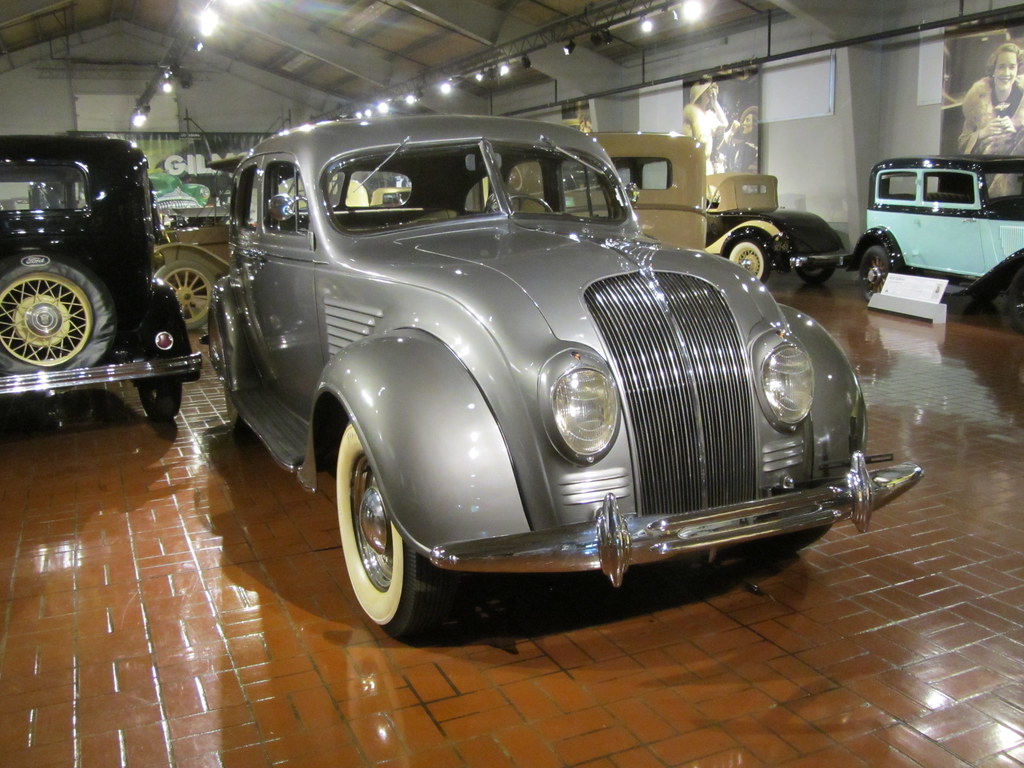
4. **Chrysler Airflow**
In a bold move that sought to redefine automotive design and engineering, the Chrysler Corporation introduced a truly revolutionary new model they aptly named the Airflow. This vehicle emerged as one of the most advanced cars of its time, brimming with a multitude of innovative features that pushed the boundaries of conventional thinking. Among its groundbreaking attributes were unibody construction, a radical departure from traditional body-on-frame designs, highly aerodynamic styling that prioritized efficiency, advanced safety features for its era, and sumptuously luxurious interiors that promised unparalleled comfort. For the mid-1930s, the Airflow was not merely a car; it was a vivid realization of the future, and Chrysler proudly advertised it as such, inviting the public to witness tomorrow, today.
Despite its avant-garde nature and visionary engineering, the Airflow proved to be a controversial car, ultimately failing to achieve the sales figures that Chrysler had so optimistically projected. Its radical aesthetics were perhaps too far ahead of their time for a public accustomed to more conventional designs. Yet, the commercial struggles of its initial run do not diminish its immense historical importance. This remains an immensely significant automobile precisely because it pioneered and introduced forward-thinking concepts and the latest available technology into mass production, challenging the status quo and inspiring future innovations.
Through its ambitious design and technological integration, the Chrysler Airflow undeniably established the American car industry as a global leader in automotive advancement. It was a testament to the nation’s willingness to experiment and innovate, setting a precedent for future technological leaps. Even in its commercial shortcomings, the Airflow carved out an indelible legacy as a harbinger of things to come, a testament to audacious vision that, though not immediately rewarded, profoundly shaped the direction of automotive development.
Read more about: The Fading Glory: 10 Car Brands Losing Their Luster and Why Drivers Are Shifting Gears in 2025
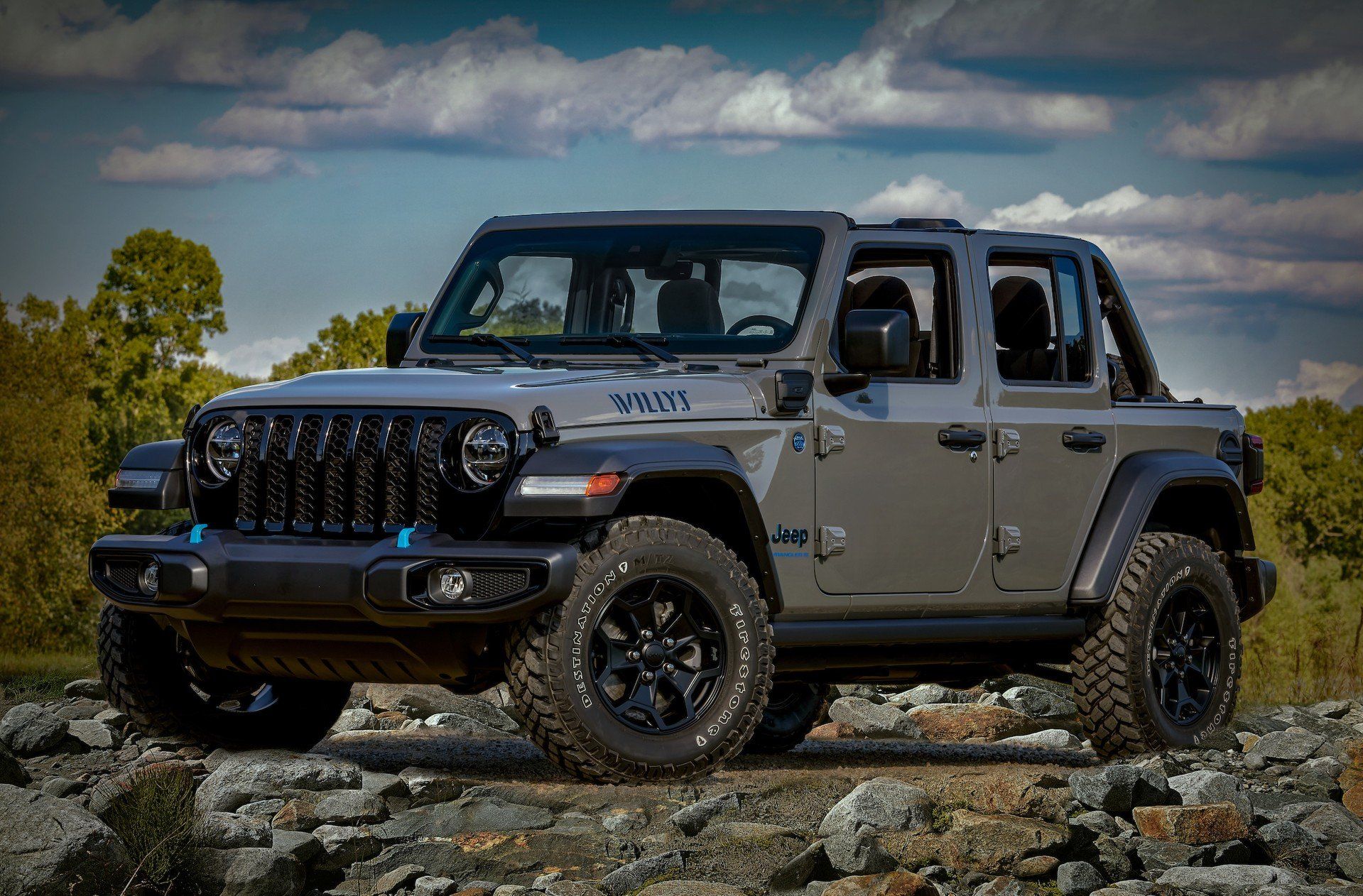
5. **Willys Jeep**
Necessity, as the old adage goes, is the mother of invention, and nowhere is this truth more strikingly evident than in the genesis of off-road vehicles. The legendary Willys Jeep stands as the paramount example of this principle, born from the crucible of urgent military demand just prior to the outbreak of the Second World War. It was ingeniously conceived as a light military vehicle, specifically engineered with the formidable capability of traversing any conceivable terrain, no matter how challenging. Its design wasn’t merely about mobility; it was intrinsically durable, robust enough to withstand the unimaginable rigors of combat, including bullets, explosions, and the most unforgiving environmental conditions.
This indomitable machine quickly became one of the essential tools that contributed to winning the largest and most devastating war in human history. The production of the original Jeep commenced in 1942, precisely as the United States formally entered the global conflict. Its manufacturing run concluded in 1946, by which point over 600,000 units had been built and subsequently exported to every corner of the world, serving allied forces with unwavering reliability. Also known interchangeably as the Willys MB or Ford GPW, it was a deceptively simple machine, yet its inherent design made it incredibly tough and profoundly dependable. Powering this rugged workhorse was a diminutive 2.2-liter four-cylinder engine, producing 60 HP, a testament to its efficient engineering.
The Willys Jeep utilized a straightforward four-wheel drive layout, a concept that, while ubiquitous today, was remarkably innovative for the 1940s, providing unprecedented traction and off-road capability. Despite its primary role as a military vehicle, the Jeep emphatically proved its enduring worth in the post-war era as an exceptionally practical machine for civilian use. Owners discovered its incredible versatility, easily equipping them to perform a myriad of tasks, from heavy-duty towing to demanding agricultural plowing, showcasing its adaptability beyond the battlefield.
This unique concept of a rugged, compact, and extraordinarily capable off-road machine blossomed and ultimately evolved into the globally recognized Jeep brand. From these humble yet heroic beginnings, Jeep ascended to become the biggest producer of off-road vehicles and SUVs, cementing its status as a true legend of the segment. The Willys Jeep is not just a vehicle; it is a symbol of resilience, adaptability, and the enduring spirit of American innovation, carving paths where none existed before.
Car Model Information: 2022 Jeep Wrangler Unlimited 4xe Sahara
Name: Willys MB , Ford GPW , Truck, 1⁄4nbhton, 4×4, command reconnaissance
Origin: United States
Type: 1/4 ton 4×4 utility truck
IsVehicle: true
Service: 1941–2000
UsedBy: allies of World War II
Wars: World War II,Korean War,List of wars: 1945–1989
Designer: Harold Crist
DesignDate: 1940 through early 1942
Manufacturer: Willys,Ford Motor Company
ProductionDate: 1941–1945
Number: WWII total: More than 647,925 *,,including early production units,Willys MB: Over 359,489 *,Ford GPW: Over 277,896 *,Auburn Automobile#Corporate history
Variants: Ford GPA
SpecLabel: MB and GPW same
Weight: convert
Length: 132 in
Abbr: refn
Width: 62 in
Height: 52 in
Crew: 3 to 4
PrimaryArmament: Designed to mount .30 or .50 caliber machine guns swiveling on a post between front seatbacks
Engine: 134 cuin
EnginePower: 60 hp
PwRatio: 49 hp
Transmission: 3-speed × 2-range transfer case
Suspension: Beam axle#Live axle vs Dead axle
Clearance: convert
PayloadCapacity: 1200 lb
FuelCapacity: 15 USgal
VehicleRange: 300 mi
Speed: 65 mph
Categories: All articles needing additional references, All articles with failed verification, All articles with unsourced statements, Articles needing additional references from September 2021, Articles with failed verification from September 2021
Summary: The Willys MB (pronounced /ˈwɪlɪs/, “Willis”) and the Ford GPW, both formally called the U.S. Army truck, 1⁄4‑ton, 4×4, command reconnaissance, commonly known as the Willys Jeep, Jeep, or jeep, and sometimes referred to by its Standard Army vehicle supply number G-503, were highly successful American off-road capable, light military utility vehicles. Well over 600,000 were built to a single standardized design, for the United States and the Allied forces in World War II, from 1941 until 1945. This also made it (by its light weight) the world’s first mass-produced four-wheel-drive car, built in six-figure numbers.
The 1⁄4-ton jeep became the primary light, wheeled, multi-role vehicle of the United States military and its allies. With some 640,000 units built, the 1⁄4‑ton jeeps constituted a quarter of the total military support motor vehicles that the U.S. produced during the war, and almost two-thirds of the 988,000 light 4WD vehicles produced, when counted together with the Dodge WC series. Large numbers of jeeps were provided to U.S. allies, including the Soviet Union at the time. Aside from large amounts of 11⁄2- and 21⁄2‑ton trucks, and 25,000 3⁄4‑ton Dodges, some 50,000 1⁄4‑ton jeeps were shipped to help Russia during WWII, against Nazi Germany’s total production of just over 50,000 Kübelwagens, the jeep’s primary counterpart.
Historian Charles K. Hyde wrote: “In many respects, the jeep became the iconic vehicle of World War II, with an almost mythological reputation of toughness, durability, and versatility.” It became the workhorse of the American military, replacing horses, other draft animals, and motorcycles in every role, from messaging and cavalry units to supply trains. In addition, improvised field modifications made the jeep capable of just about any other function soldiers could think of. Military jeeps were adopted by countries all over the world, so much so that they became the most widely used and recognizable military vehicle in history.
Dwight D. Eisenhower, the Supreme Commander of the Allied Expeditionary Force in Europe in World War II, wrote in his memoirs that most senior officers regarded it as one of the five pieces of equipment most vital to success in Africa and Europe. General George Marshall, Chief of Staff of the US Army during the war, called the vehicle “America’s greatest contribution to modern warfare.” In 1991, the MB Jeep was designated an “International Historic Mechanical Engineering Landmark” by the American Society of Mechanical Engineers.
After WWII, the original jeep continued to serve, in the Korean War and other conflicts, until it was updated in the form of the M38 Willys MC and M38A1 Willys MD (in 1949 and 1952 respectively), and received a complete redesign by Ford in the form of the 1960-introduced M151 jeep. Its influence, however, was much greater than that—manufacturers worldwide began building jeeps and similar designs, either under license or not—at first primarily for military purposes, but later also for the civilian market. Willys turned the MB into the civilian Jeep CJ-2A in 1945, making the world’s first mass-produced civilian four-wheel drive. The “Jeep” name was trademarked and grew into a successful and highly valued brand.
The success of the jeep inspired both an entire category of recreational 4WDs and SUVs, making “four-wheel drive” a household term, and numerous incarnations of military light utility vehicles. In 2010, the American Enterprise Institute called the jeep “one of the most influential designs in automotive history.” Its “sardine tin on wheels” silhouette and slotted grille made it instantly recognizable, and it has evolved into the currently produced Jeep Wrangler still largely resembling the original jeep design.
Get more information about: Willys MB
Buying a high-performing used car >>>
Brand: Willys Model: Jeep
Price: $27,950 Mileage: 49,056 mi.
Read more about: Beyond the Sticker Price: 15 SUVs Where Annual Repair Bills Can Easily Surpass $1500
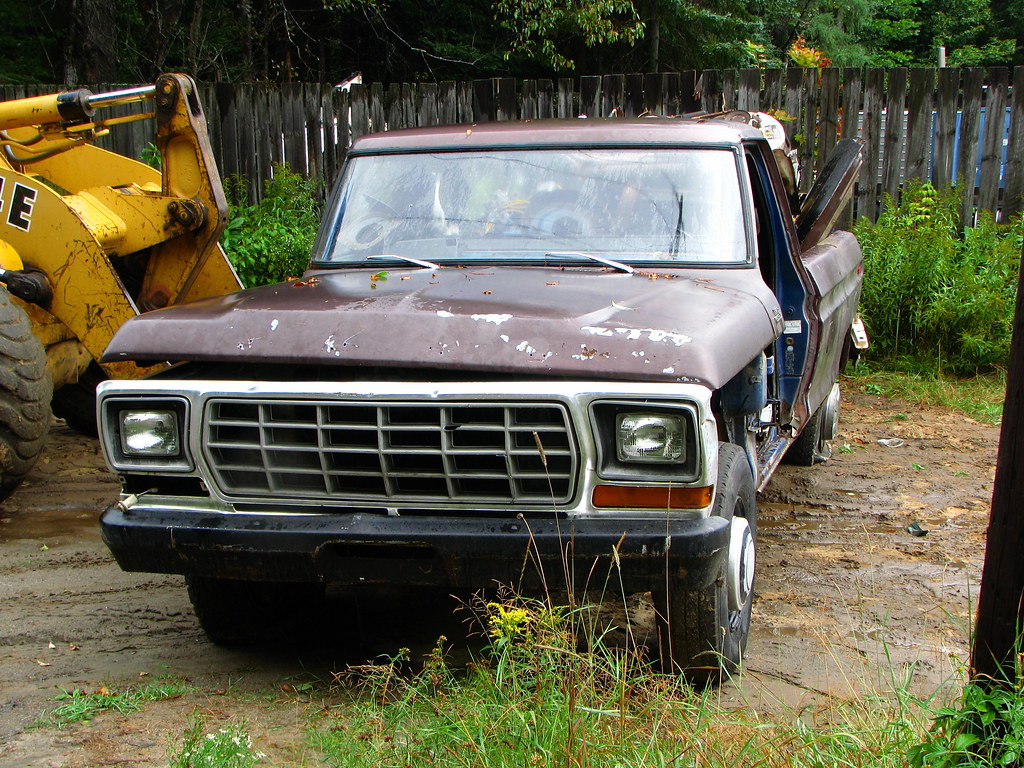
6. **Ford F-Series Pickup**
Pickup trucks, in their most fundamental form, serve as the tireless backbone of the global economy, particularly for the vast network of small and medium-sized businesses that rely on them as a practical, indispensable mode of transport. This vital role has remained consistent for almost a century, a testament to their enduring utility. Pickups represent a singular car class that has persevered through over a hundred years, exhibiting remarkably little departure from their original utilitarian concept. While the core idea remains constant, modern pickup trucks have undeniably grown in both size and power, evolving to meet contemporary demands.
Today’s pickups boast enhanced capabilities, able to carry and tow more weight than ever before, reflecting advancements in engineering and materials. Yet, the basic concept, the underlying technical layout, and the fundamental design principles have largely remained steadfast, proving the timeless efficacy of the original formula. Among the dozens of models that have graced the roads of this country, one nameplate stands head and shoulders above the rest, consistently serving as the definitive symbol of quality, durability, and a rich tradition for over 80 years: the Ford F-Series truck.
The Ford F-Series has been produced across an astonishing 13 generations, resulting in the construction of over 35 million trucks in countless different variants, unequivocally making it the definitive U.S. pickup. Over the decades, it has masterfully evolved from being a purely rugged workhorse into a highly coveted lifestyle model, even spawning performance vehicles like the iconic Lightning and Raptor versions that marry utility with exhilarating speed. This remarkable adaptability underscores its enduring appeal.
It remains one of the best-selling U.S. vehicles of all time, a ubiquitous presence on American roads, and truly a quintessential piece of Americana on four wheels. The Ford F-Series trucks, as they are widely recognized today, were formally introduced in 1948 as the F-100. While Ford offered various trucks both before and after this pivotal moment, the F-Series stands as, without question, the most successful and influential story in the entire history of pickup trucks in America, a saga of unwavering dedication to strength and reliability.
Car Model Information: 2019 Acura RDX Technology Package
Name: Ford F-Series
Caption: 2022 Ford F-150 Lariat Luxury
Manufacturer: Ford Motor Company
Aka: Ford Lobo (Mexico, 1992–present)
Production: 1948–present
Class: Pickup truck#Full-size pickup truck
Layout: Front-engine, rear-wheel-drive layout,rear-wheel drive
Predecessor: 1941 Ford
Categories: All-wheel-drive vehicles, All Wikipedia articles written in American English, All articles that may contain original research, All articles with unsourced statements, Articles that may contain original research from September 2020
Summary: The Ford F-Series is a series of light-duty trucks marketed and manufactured by the Ford Motor Company since model year 1948 as a range of full-sized pickup trucks — positioned between Ford’s Ranger and Super Duty pickup trucks. Alongside the F-150 (introduced in 1975), the F-Series also includes the Super Duty series (introduced in 1999), which includes the heavier-duty F-250 through F-450 pickups, F-450/F-550 chassis cabs, and F-600/F-650/F-750 Class 6–8 commercial trucks.
Get more information about: Ford F-Series
Buying a high-performing used car >>>
Brand: Ford Model: F-Series Pickup
Price: $28,599 Mileage: 12,696 mi.
Read more about: 12 Must-See SUV Launches of 2025: Your Comprehensive MotorTrend Buyer’s Guide
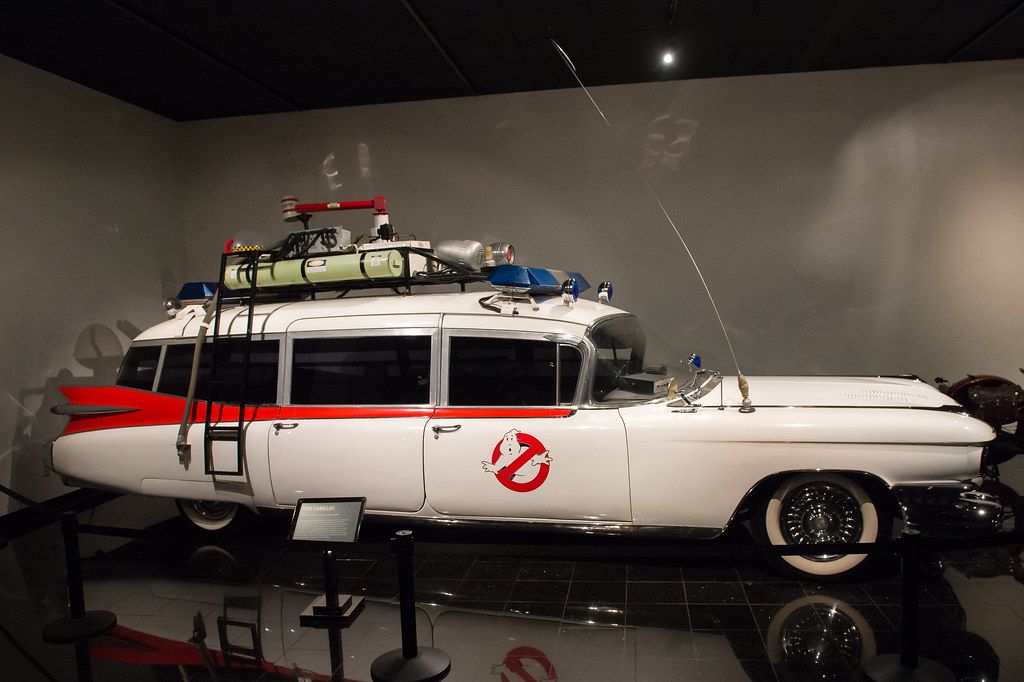
7. **1959 Cadillac**
No comprehensive list of iconic American cars would be complete without the legendary 1959 Cadillac. This vehicle stands as a testament to an era of unbridled optimism and audacious design, capturing the imagination of a nation. It was truly a landmark moment in automotive design and technological advancement, representing the magnificent qualities that defined the brand.
The 1959 model year famously saw Cadillac’s most noticeable feature—the chrome fins—ascend to ridiculous heights, soaring to 98 inches high. This created an unforgettable silhouette, deeply embedded in pop culture. Beyond flamboyant aesthetics, Cadillac significantly improved the mechanical layout, integrating enhanced suspension components and a robust 6.4-liter V8 engine capable of 320 HP, cementing its luxury performance leadership.
With 142,000 cars sold, even by today’s standards, the 1959 Cadillac achieved remarkable success. Diverse models, including the prestigious Eldorado and stately Fleetwood limousine, catered to varied tastes. Thanks to its timeless design, formidable power, and unwavering quality, the 1959 Cadillac remains one of the best years in Cadillac history and an undisputed landmark American car.
Car Model Information: 2019 Acura RDX Technology Package
Name: Cadillac DeVille
Caption: 2004 Cadillac DeVille DHS
Manufacturer: Cadillac
Production: 1958–2005
ModelYears: 1959–2005
Class: luxury car
Layout: FR layout
Predecessor: Cadillac Series 62
Successor: Cadillac DTS
Categories: 1950s cars, 1960s cars, 1970s cars, 1980s cars, 1990s cars
Summary: The Cadillac DeVille is a model name used by Cadillac over eight generations, originally to designate a trim level of the 1949 Cadillac Series 62 and later for a standalone model in the brand range. The last model marketed specifically as a DeVille was the 2005 full-size sedan, at the time, Cadillac’s largest model.
For 2006, the DeVille nameplate was retired, when the model line was carried forward (with minor revisions) as the Cadillac DTS, using a nomenclature adopted by the Cadillac STS and CTS.
Get more information about: Cadillac de Ville series
Buying a high-performing used car >>>
Brand: Cadillac Model: 1959 Cadillac
Price: $28,599 Mileage: 12,696 mi.
Read more about: 12 Must-See SUV Launches of 2025: Your Comprehensive MotorTrend Buyer’s Guide
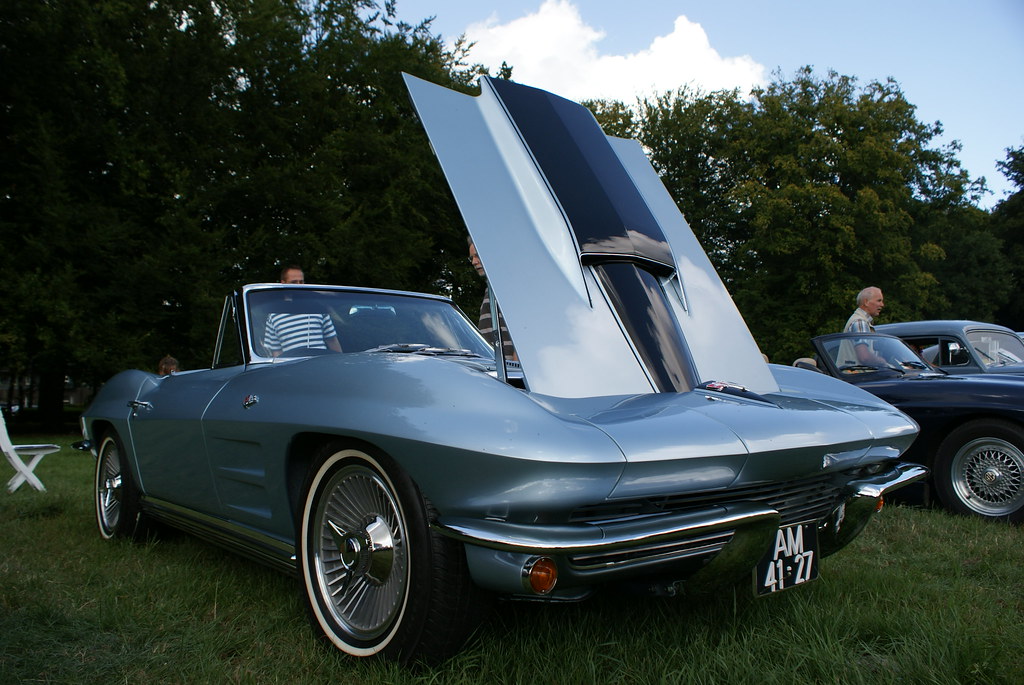
8. **Chevrolet Corvette Stingray**
Just a decade after its groundbreaking original, Chevrolet unveiled the second generation Corvette in 1963, captivating the automotive world. The Corvette had established itself as a formidable sports car, prompting substantial investment in its successor. This commitment resulted in a new platform, sophisticated independent rear suspension, and powerful new engines, elevating its performance pedigree.
However, its breathtaking new body truly set the 1963 Corvette apart, instantly making it one of the most stunningly beautiful cars of the 1960s. The Stingray model irrevocably marked the Corvette’s ascension to a world-class sports car, able to stand with Europe’s finest. This pivotal moment firmly placed American performance on the global map and forged the enduring legend of Chevrolet sports cars.
The Corvette Stingray derived its evocative name from GM’s 1961 concept, owing to its resemblance to the powerful stingray shark. Distinctive design elements included concealed headlights, the iconic split rear window, bulged fenders, and a uniquely rounded cabin. These made the Stingray one of the most fascinating examples of Googie design, blending futuristic aesthetics with exhilarating performance.
Car Model Information: 2019 Acura RDX Technology Package
Categories: All article disambiguation pages, All disambiguation pages, Disambiguation pages, Short description is different from Wikidata
Summary: Chevrolet Corvette Stingray was the name for several model years of Chevrolet Corvettes:
Corvette Stingray (concept car), concept cars from 1959 and 2009
Chevrolet Corvette (C2), the second generation of the Corvette, introduced in 1963, referred to as the Corvette Sting Ray
Chevrolet Corvette (C3), the third generation of the Corvette, introduced in 1968, referred to as the Corvette Stingray from 1969 through 1976 — in 1968, the Corvette did not have the Stingray badging
Chevrolet Corvette (C7), the seventh generation of the Corvette, introduced in 2014, referred to as the Corvette Stingray
Chevrolet Corvette (C8), the eighth generation of the Corvette, introduced in 2020, referred to as the Corvette Stingray
These generations did not use the name stingray:
Chevrolet Corvette (C1), the first generation of the Corvette, introduced in 1953
Chevrolet Corvette (C4), the fourth generation of the Corvette, introduced in 1984
Chevrolet Corvette (C5), the fifth generation of the Corvette, introduced in 1997
Chevrolet Corvette (C6), the sixth generation of the Corvette, introduced in 2005
Get more information about: Chevrolet Corvette Stingray
Buying a high-performing used car >>>
Brand: Chevrolet Model: Corvette Stingray
Price: $28,599 Mileage: 12,696 mi.
Read more about: Beyond the Garage: The 12 Most Impressive Celebrity Car Collections Ranked and Revealed
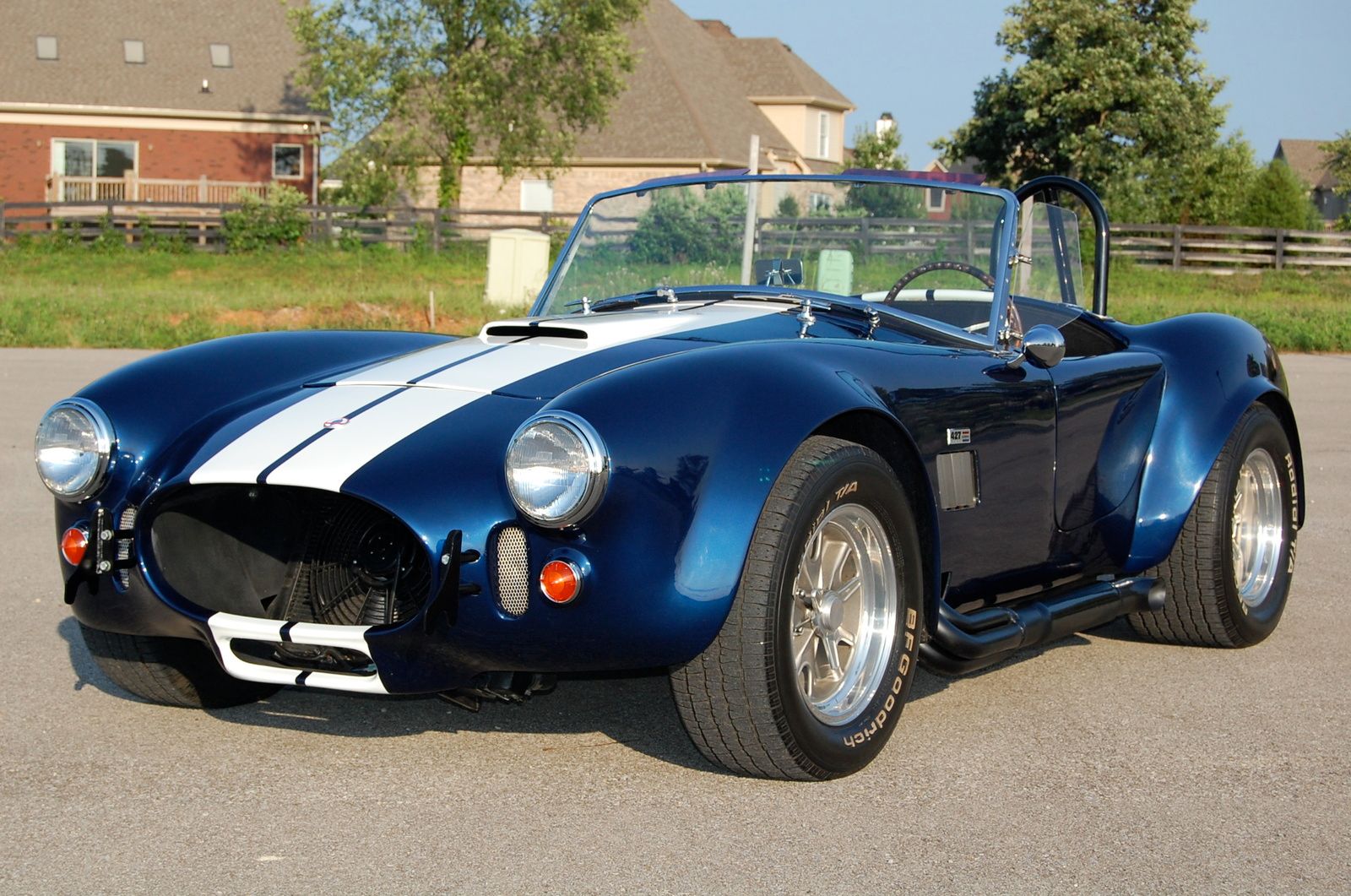
9. **Shelby Cobra 289**
The genesis of the Shelby Cobra 289 is a captivating tale of drama and ingenuity. In 1962, Carroll Shelby learned AC Cars in England would cease Ace roadster production due to engine unavailability. Swiftly, Shelby arranged transport of engineless bodies to his Venice Beach workshop, where powerful Ford 260 V8 engines awaited. This audacious fusion of a diminutive yet potent American V8 within a lightweight British body proved a match made in heaven.
The combination quickly demonstrated immense potential, soon upgraded with the renowned 289 V8, delivering a formidable 271 HP. This instantly transformed the lithe roadster into a true powerhouse. Shelby’s primary objective was racing dominance; the Cobra swiftly asserted supremacy, dominating domestic championships and emphatically besting Corvettes, Ferraris, and Jaguars.
Shelby’s ambition extended beyond national borders, aiming to prove his concept in Europe. With Ford’s substantial support, Shelby campaigned Cobras across Europe’s revered racing circuits in 1963-1964, consistently replicating success. The small V8 roadster unequivocally dominated the GT class, a testament to its design and the Ford V8’s durability. Factory-prepared “Competition” Cobras enabled numerous amateur racers to achieve success with this fierce machine.
Car Model Information: 2019 Acura RDX Technology Package
Caption: AC Cobra 427
Layout: front-engine, rear-wheel drive layout
Manufacturer: AC Cars,Shelby American
Production: 1965–1967
Name: MkIII
Aka: AC Shelby Cobra , Shelby AC Cobra
BodyStyle: Roadster (automobile)
Assembly: Thames Ditton,Surrey,England
Predecessor: AC Ace
Class: Sports car
Successor: AC MK IV
Related: AC Frua,Shelby Daytona
Engine: cvt,V8 engine
Wheelbase: cvt
Length: cvt
Width: cvt
Height: cvt
Weight: cvt
Categories: 1960s cars, AC vehicles, All articles with unsourced statements, Articles with short description, Articles with unsourced statements from December 2014
Summary: The AC Cobra, sold in the United States as the Shelby Cobra and AC Shelby Cobra, is a sports car manufactured by British company AC Cars, with a Ford V8 engine. It was produced intermittently in both the United Kingdom and later the United States since 1962.
Get more information about: AC Cobra
Buying a high-performing used car >>>
Brand: Shelby Model: Cobra 289
Price: $28,599 Mileage: 12,696 mi.
Read more about: Your Garage, Your Rules: 13 Ridiculously Easy Cars to Maintain and Repair Yourself for the DIY Enthusiast
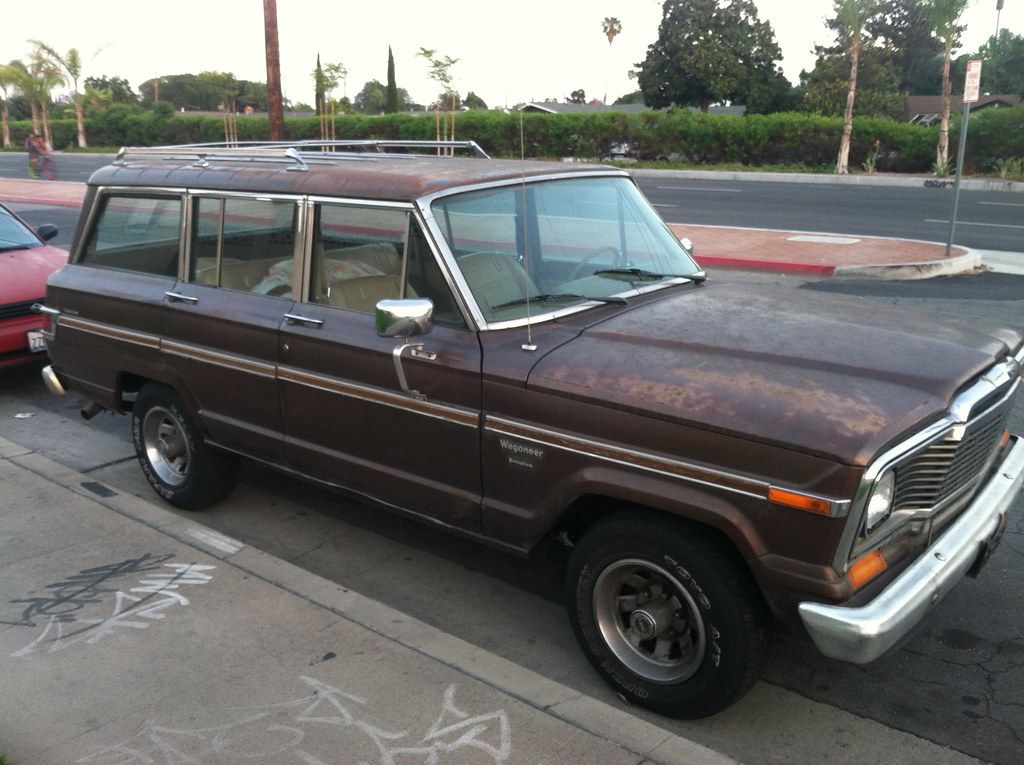
10. **Jeep Wagoneer**
In an era when modern SUVs often feel like bloated sedans, the Jeep Wagoneer emerged as a strikingly different proposition. It was a substantial off-roader, remarkably luxurious for its time, boasting enormous interior space and genuinely respectable off-road capabilities. These attributes established the Wagoneer as the ultimate vintage luxury off-road vehicle, setting a new standard for family adventure.
Remaining in production from 1963 to 1991, with only minor tweaks, proved its inherent qualities and timeless design. Initially available as a two-door or four-door SUV, and a panel truck, it showcased early versatility. As the model matured, it offered increasingly opulent features, including distinctive wooden side panels, adding classic sophistication.
The Wagoneer came standard with a compass, a subtle indication it was envisioned as a luxurious land yacht for navigating ranches, fields, and mountain trails. Powered by inline-six and V8 engines, it offered both rear-wheel and all-wheel drive. Widely recognized as the first proper SUV, it is the undeniable progenitor and “daddy” of all modern SUVs, laying groundwork for an entire segment.
Car Model Information: 2023 Jeep Grand Wagoneer Series II 4×4
Name: Jeep Wagoneer
Aka: Jeep Grand Wagoneer
Caption: 1990 Jeep Grand Wagoneer (SJ)
Manufacturer: Jeep
Class: Full-size SUV
Production: 1962–1993,2021–present
Layout: Front-engine, rear-wheel-drive
Chassis: ubl
Categories: 1960s cars, 1970s cars, 1980s cars, 1990s cars, 2020s cars
Summary: The Jeep Wagoneer and Grand Wagoneer are a sport utility vehicle (SUV) nameplate of Jeep vehicles, with several models marketed for the 1963 through 1993 model years and again since the 2022 model year.
Various versions of the Wagoneer/Grand Wagoneer were manufactured in the US and other nations by Kaiser Motors (1962−1971), by American Motors (1971−1987), by Chrysler (1987−1993), and Stellantis from 2021.
A revival of the Jeep Wagoneer was introduced as a concept version on September 3, 2020, and as the production model on March 11, 2021. Sales began in the second half of 2021 for the 2022 model year. In 2024, Jeep added an all-electric vehicle called the Wagoneer S to the lineup.
Get more information about: Jeep Wagoneer
Buying a high-performing used car >>>
Brand: Jeep Model: Wagoneer
Price: $50,850 Mileage: 38,988 mi.
Read more about: 12 Must-See SUV Launches of 2025: Your Comprehensive MotorTrend Buyer’s Guide

11. **Ford Mustang**
The enduring love affair between car enthusiasts and the Ford Mustang has spanned over half a century, a testament to its unparalleled appeal and lasting cultural impact. From its dramatic unveiling in April 1964, people could not get enough of Detroit’s beloved pony car. Over the decades, Ford has produced over nine million Mustangs, establishing it as one of the most successful nameplates across the entire car industry.
The secret behind Mustang’s magnetic appeal lies in Ford’s expert blend of raw performance, punctuated by the unmistakable rumble of a powerful V8, with an unexpected touch of luxury and undeniable good looks. This irresistible combination was packaged into an astonishingly affordable vehicle, enhanced by an extensive list of optional extras. The powerful image and burgeoning legend were integral parts of the Mustang’s allure from day one.
The initial, overwhelming success of the Mustang fundamentally created an entirely new class of cars, affectionately christened “pony cars.” Its astounding inaugural year sales earned it a hallowed place in history books. Over the years, the Mustang has transcended vehicle status to become the definitive automotive symbol of America, remaining one of its finest and most globally respected products.
Car Model Information: 2008 Ford Mustang GT Premium
Name: Ford Mustang
Caption: 2018 Ford Mustang GT 5.0
Aka: Ford T5 (Germany)
Manufacturer: Ford Motor Company
Production: March 1964 – present
ModelYears: 1965–present
Class: Unbulleted list
BodyStyle: Unbulleted list
Layout: Front-engine, rear-wheel-drive layout
Categories: 1970s cars, 1980s cars, 1990s cars, 2+2 coupés, 2000s cars
Summary: The Ford Mustang is an American automobile manufactured and marketed by Ford since 1964, as Ford’s longest nameplate in continuous production. Currently in its seventh generation, it is the fifth-best selling Ford car nameplate. The namesake of the “pony car” automobile segment, the Mustang was developed as a highly styled line of sporty coupes and convertibles derived from existing model lines, initially distinguished by its pronounced “long hood, short deck” proportions.
Originally predicted to sell 100,000 vehicles yearly, the 1965 Mustang became the most successful vehicle launch since the 1927 Model A. Introduced on April 17, 1964 (16 days after the Plymouth Barracuda), over 400,000 units were sold in its first year; the one-millionth Mustang was sold within two years of its launch. In August 2018, Ford produced the 10-millionth Mustang; matching the first 1965 Mustang, the vehicle was a 2019 Wimbledon White convertible with a V8 engine.
The success of the Mustang launch led to multiple competitors from other American manufacturers, including the Chevrolet Camaro and Pontiac Firebird (1967), AMC Javelin (1968), and Dodge Challenger (1970). It also competed with the Plymouth Barracuda, which was launched around the same time. The Mustang also had an effect on designs of coupes worldwide, leading to the marketing of the Toyota Celica and Ford Capri in the United States (the latter, by Lincoln-Mercury). The Mercury Cougar was launched in 1967 as a unique-bodied higher-trim alternative to the Mustang; during the 1970s, it included more features and was marketed as a personal luxury car.
From 1965 until 2004, the Mustang shared chassis commonality with other Ford model lines, staying rear-wheel-drive throughout its production. From 1965 to 1973, the Mustang was derived from the 1960 Ford Falcon compact. From 1974 until 1978, the Mustang (denoted Mustang II) was a longer-wheelbase version of the Ford Pinto. From 1979 until 2004, the Mustang shared its Fox platform chassis with 14 other Ford vehicles (becoming the final one to use the Fox architecture). Since 2005, Ford has produced two generations of the Mustang, each using a distinct platform unique to the model line.
Through its production, multiple nameplates have been associated with the Ford Mustang series, including GT, Mach 1, Boss 302/429, Cobra (separate from Shelby Cobra), and Bullitt, along with “5.0” fender badging (denoting 4.9 L OHV or 5.0 L DOHC V8 engines).
Get more information about: Ford Mustang
Buying a high-performing used car >>>
Brand: Ford Model: Mustang
Price: $16,785 Mileage: 81,832 mi.
Read more about: 9 Luxury Trucks Redefining Comfort and Power: A Deep Dive into the Best of 2023-2025
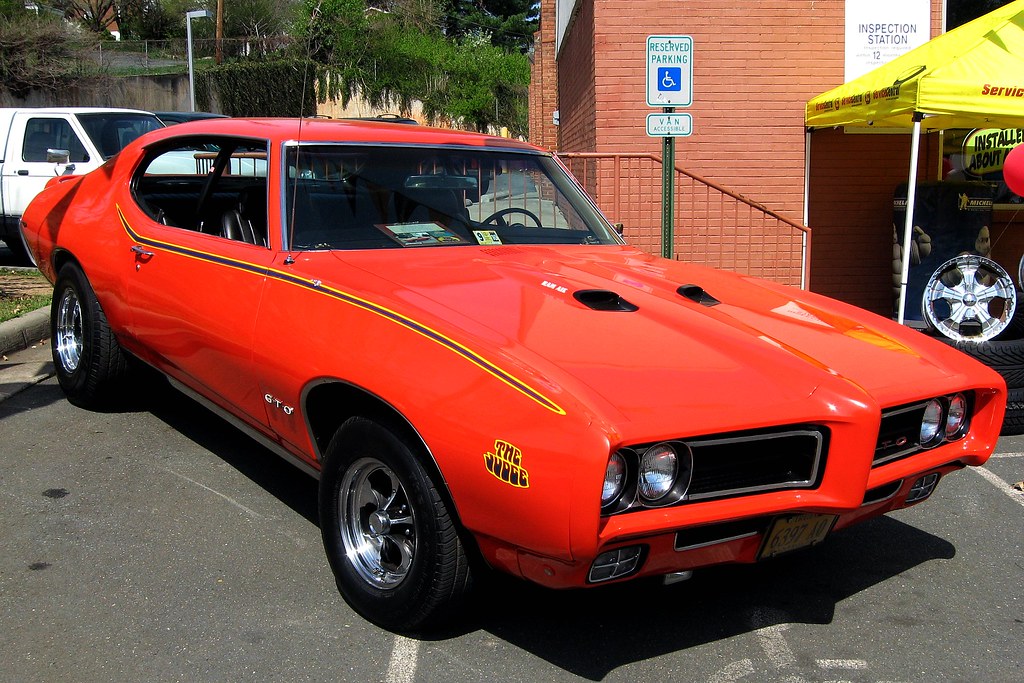
12. **Pontiac GTO**
In the early 1960s, Pontiac leveraged its drag strip success as a potent marketing tool, cultivating demand for powerful, fast cars. However, the company was reluctant to build a dedicated sports car from scratch, given its existing large, heavy models. A brilliant idea emerged from young engineer John Z. DeLorean: install the big 396 V8 into the lighter, intermediate two-door Tempest body. This affordable approach created a true performance machine, altering American automotive history.
The Tempest GTO was initially a high-performance option on the intermediate Tempest. For just $295, buyers received a high-performance 396 V8, delivering 325 HP standard or 348 HP with Tri-Power. This package included a manual transmission, unique trim, GTO decals, and dual exhaust. The car’s light weight ensured convincing performance, making it one of the quickest American cars on the market in 1964, challenging even Corvette owners.
Remarkably, Pontiac’s sales managers initially doubted the GTO package’s potential. However, DeLorean’s conservative estimate of 5,000 examples per year was drastically surpassed, with sales soaring to over 32,000 copies. This overwhelming commercial success unequivocally demonstrated the GTO was an undeniable hit among younger buyers. With its sensational debut, a true automotive star was born, shaping the muscle car landscape.
Car Model Information: 1966 Pontiac GTO Coupe
Name: Pontiac GTO
Caption: 2005 Pontiac GTO
Manufacturer: Pontiac (automobile),Holden
Class: Mid-size car,Compact car,Mid-size car
Production: 1963–1974,2003–2006
Predecessor: Pontiac Tempest
Layout: Front-engine, rear-wheel-drive layout
ModelYears: 1964-1974 2004-2006
Categories: 1970s cars, 2000s cars, All articles with unsourced statements, Articles with short description, Articles with unsourced statements from October 2008
Summary: The Pontiac GTO is a front-engine, rear-drive, two-door, and four-passenger automobile manufactured and marketed by the Pontiac division of General Motors over four generations from 1963 until 1974 in the United States — with a fifth generation made by GM’s Australian subsidiary, Holden, for the 2004 through 2006 model years.
The first generation of the GTO is credited with popularizing the muscle car market segment in the 1960s. Some consider the Pontiac GTO to have started the trend with all four domestic automakers offering a variety of competing models.
For the 1964 and 1965 model years, the GTO was an optional package on the intermediate-sized Pontiac LeMans. The 1964 GTO vehicle identification number (VIN) started with 22, while the 1965 GTO VIN began with 237. The GTO was designated as a separate Pontiac model from 1966 through 1971 (VIN 242…). It became an optional package again for the 1972 and 1973 intermediate LeMans. For 1974, the GTO was an optional trim package on the compact-sized Ventura.
The GTO model was revived for the 2004 through 2006 model years as a captive import for Pontiac, a left-hand drive version of the Holden Monaro, itself a coupé variant of the Holden Commodore.
Get more information about: Pontiac GTO
Buying a high-performing used car >>>
Brand: Pontiac Model: GTO
Price: $59,991 Mileage: 4,408 mi.
Read more about: Fueling Your Wallet’s Misery: These 14 Rides Have Terrible MPG, and Owners Despise the Pump Life

13. **Dodge Viper RT/10**
The electrifying release of the original Dodge Viper in the early 1990s illustrates what happens when talented individuals, united by clear goals, create the perfect car. Visionaries like Bob Lutz, Francois Castaing, Tom Gale, and Carroll Shelby were deeply involved with Chrysler’s burgeoning performance program. During robust sales, Chrysler sought a halo model to celebrate its resurgence, inspired by Shelby’s original Cobra. The team envisioned a modern-day Cobra with more power, refinement, and performance.
Their aim was to demonstrate that the timeless concept of a lightweight yet immensely powerful roadster remained profoundly attractive. The team assembled over 80 engineers and designers, officially beginning “Project Viper.” By 1989, the Dodge Viper Concept was unveiled to an awe-struck crowd at the Detroit Motor Show. Its aggressive yet elegant lines, combined with a prototype V10 engine, sent the audience into a frenzy.
The public’s overwhelming reaction compelled Lee Iacocca to order production for a 1992 release. The Viper performed pace car duty at the Indianapolis 500, thrilling millions. Under its sculpted hood resided an immense 8.0-liter, all-aluminum V10, churning out 400 HP and 465 lb-ft of torque, securing its place as one of the most powerful new models. Its dramatic visual presence, price just over $50,000, and blistering 0-60 mph times of 4.6 seconds, decisively outclassed many European exotics, solidifying its status as one of the best-looking and fastest American cars of the early 1990s.
Car Model Information: 2022 Tesla Model 3 Long Range
Name: Dodge Viper (SR I)
Production: 1991–1995
ModelYears: 1992–1995
Assembly: New Mack Assembly,Detroit,Michigan
Designer: Tom Gale (designer)
Class: Sports car
BodyStyle: Targa top
Engine: Viper engine#First generation,V10 engine
Powerout: 400 hp
Abbr: on
Transmission: BorgWarner,Borg-Warner_T-56_transmission,manual transmission
Wheelbase: 2446 mm
Length: 4450 mm
Width: 1920 mm
Height: 1120 mm
Weight: 1490 kg
Successor: Dodge Viper (SR II)
Layout: FR layout
Related: Rinspeed Veleno
Aka: Chrysler Viper (Europe)
Categories: Articles with short description, Cars discontinued in 1995, Cars introduced in 1992, Dodge vehicles, Short description matches Wikidata
Summary: The Dodge Viper (SR I) is the first-generation Viper sports car, manufactured by American automobile manufacturer Dodge. It was originally tested in January 1989 as a prototype, then later introduced in 1991 as a pace car for the Indianapolis 500, then finally going on sale in January 1992.
The SR I began the Dodge Viper model lineup, which would continue on until 2017, consisting of five generations.
The SRI was replaced by the updated SRII after a series of updates in 1995.
Get more information about: Dodge Viper (SR I)
Buying a high-performing used car >>>
Brand: Dodge Model: Viper RT/10
Price: $24,815 Mileage: 64,195 mi.
Read more about: Gone But Not Forgotten: Unearthing the Stories Behind 14 Iconic American Cars That Drove Off into the Sunset
As we reflect on these magnificent machines, it becomes clear that American ingenuity isn’t merely about creating cars; it’s about crafting legacies. Each vehicle, from the chrome-laden kings of yesteryear to the audacious performance legends of today, tells a story of ambition, innovation, and an unwavering commitment to the thrill of the open road. These are not just cars; they are vibrant chapters in the ongoing saga of American automotive brilliance, forever inspiring drivers and shaping the very culture of driving across the globe.





